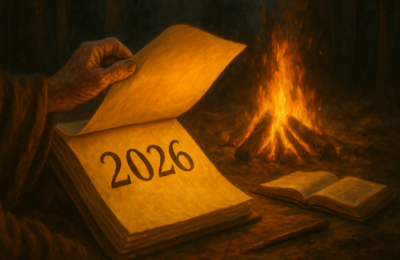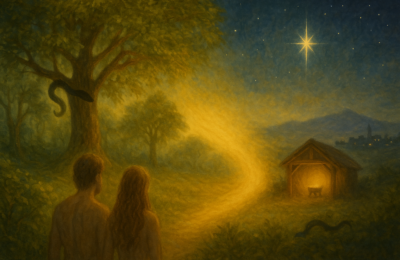Part 2 of In His Image: Justice, Race, and the Gospel
Key Passage: Acts 17:26
The DNA Test
She thought she knew who she was.
Growing up, Jasmine had always been told, “We’re Irish. That’s our heritage. That’s our identity.” Then one Christmas, she took a DNA test—mostly for fun. What she got back wasn’t just a pie chart. It was a paradigm shift.
She discovered her ancestry stretched far wider than anyone in her family had guessed: a little West African, a trace of Native American, a surprising amount of Mediterranean. Suddenly, the stories she’d told about herself didn’t feel so simple.
But in a way, it wasn’t that surprising.
Because if Acts 17:26 is true, then we all come from one blood.
“And He made from one man every nation of mankind to live on all the face of the earth, having determined allotted periods and the boundaries of their dwelling place.” — Acts 17:26 (ESV)
Racism dies where the truth of the Imago Dei lives.
Because God has already told us who we are.
Made in His Image
Before there were nations, tribes, or tongues—
There was a garden.
There was a man.
And there was the image of God.
“So God created man in His own image, in the image of God He created him; male and female He created them.” — Genesis 1:27
Every person—no matter their ethnicity, status, or story—bears the Imago Dei. That Latin phrase, used in theology to describe Genesis 1:27, means “the image of God.” It’s not physical; it’s personal. It means we reflect our Creator’s moral, rational, spiritual, and relational nature.
That’s why racism is more than a social problem.
It’s a theological offense.
“With [our tongue] we bless our Lord and Father, and with it we curse people who are made in the likeness of God.” — James 3:9
You can’t worship God and withhold dignity from His image-bearers.
The Race Lie and the Truth of the Imago Dei
Here’s the uncomfortable truth:
Race, as most people use the term, is not a biblical category.
Modern racial theory was built during the Enlightenment to justify hierarchy—based on skin, geography, or ancestry. It has been misused in colonization, slavery, and even by Christians who twisted Scripture for evil ends.
But Acts 17:26 reclaims the conversation. It tells us:
- We all come from one man—Adam.
- We all bear one image—God’s.
- We were created by one sovereign plan—God’s providential placement of people and nations.
In other words, your deepest identity is not your race. It is your reflection.
This matters when evaluating ideologies like Critical Race Theory (CRT), which divides the world by oppressed/oppressor status based on race or ethnicity. While CRT rightly observes patterns of injustice, it wrongly redefines human nature in purely sociological terms.
As Grudem and Shenvi point out, this results in:
- Group guilt rather than individual responsibility
- Victimhood as moral capital
- A rejection of common humanity
But the gospel doesn’t flatten human experience; it redeems it.
The Imago Dei doesn’t erase diversity; it exalts it.
“After this I looked, and behold, a great multitude… from every nation, from all tribes and peoples and languages, standing before the throne…” — Revelation 7:9
Heaven is not colorblind.
But it is Christ-centered.
Reimagining the Church through the Image of God
If the Church truly believes in the image of God, then:
- We will refuse racial partiality (James 2:1–4)
- We will honor every person’s dignity (1 Peter 2:17)
- We will pursue gospel-centered unity (Galatians 3:28)
This doesn’t mean we ignore history. It means we interpret it rightly.
We must teach our churches that identity politics are a cheap substitute for image-bearing theology. That the solution to injustice is not redistribution of power—but reconciliation through Christ. And that diversity, when rooted in truth, is a display of God’s glory, not a political checkbox.
We are not defined by our DNA.
We are defined by our Creator.
Reclaiming Human Dignity
In a world addicted to labels, Christians must reintroduce image-bearing into the public conversation.
Imagine if your church began every outreach, every mission, every conversation about race with this truth:
“You are made in the image of God. You matter because He made you.”
The cure for racism isn’t colorblindness.
It’s Christlikeness.
And Christ didn’t come to erase your story.
He came to redeem it.
So let’s begin there.
← Previous Post: What Is Justice? A Biblical Perspective
Next Post →: Biblical Justice vs. Social Justice
View Full Series: In His Image: Justice, Race, and the Gospel








